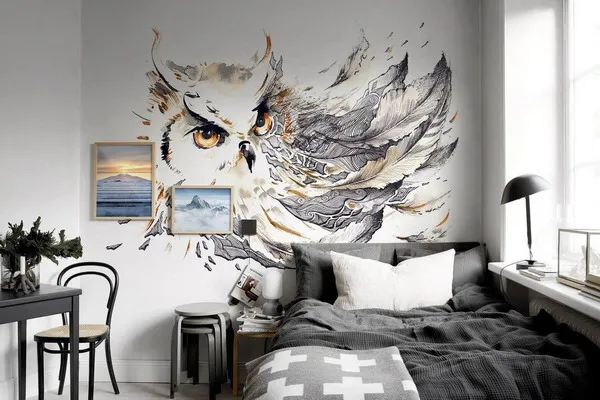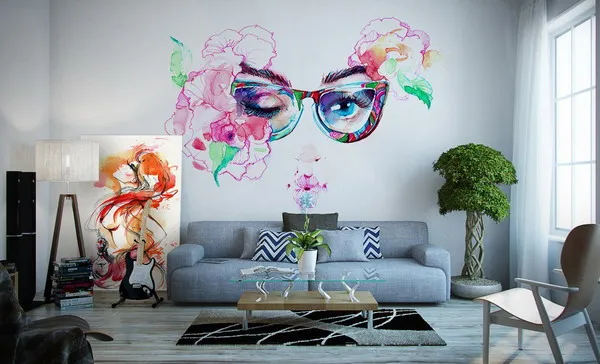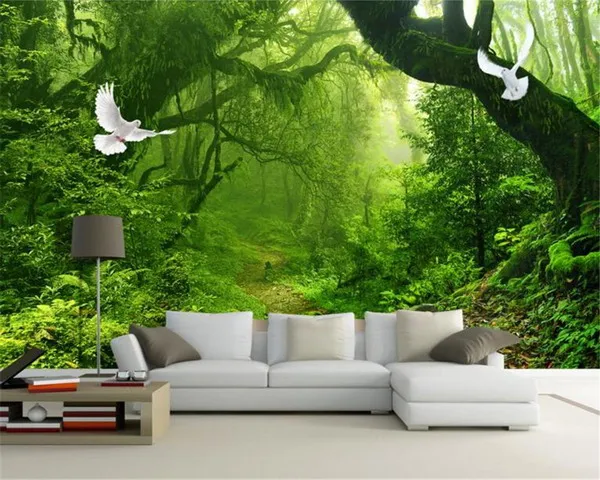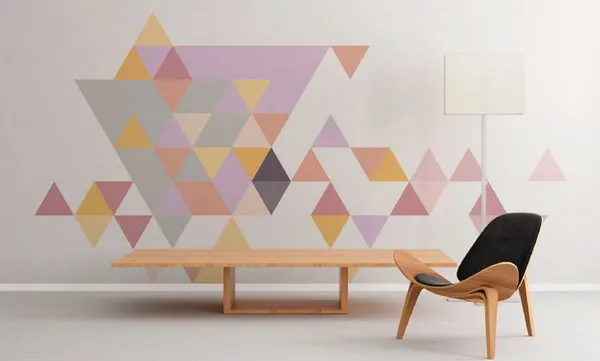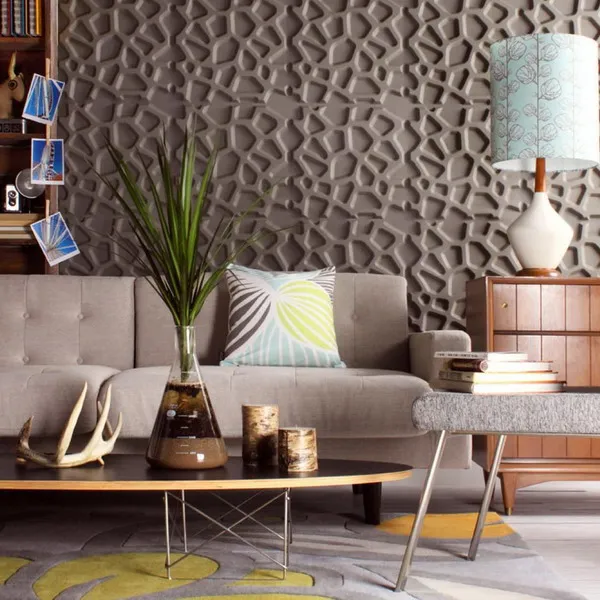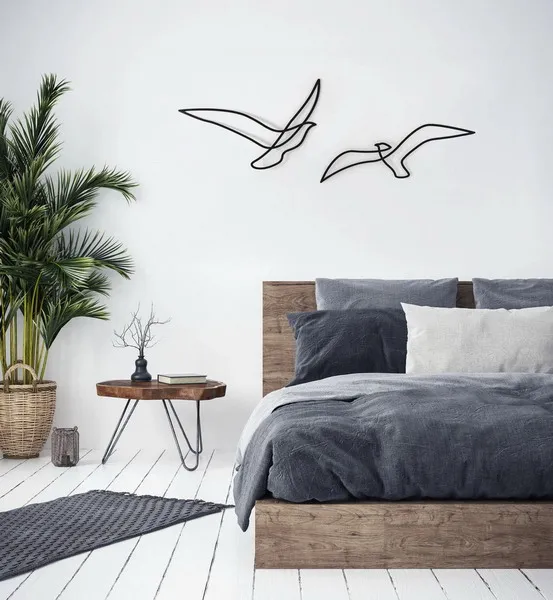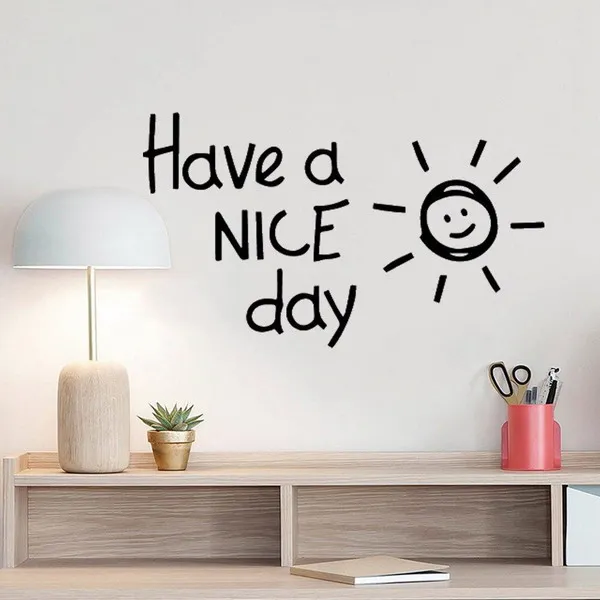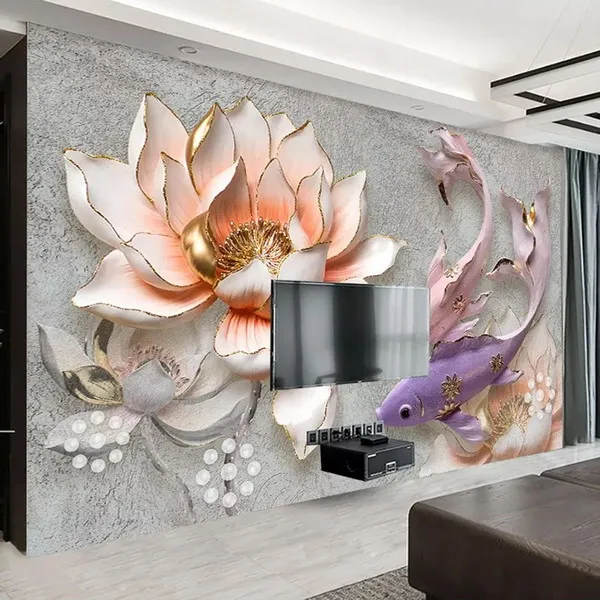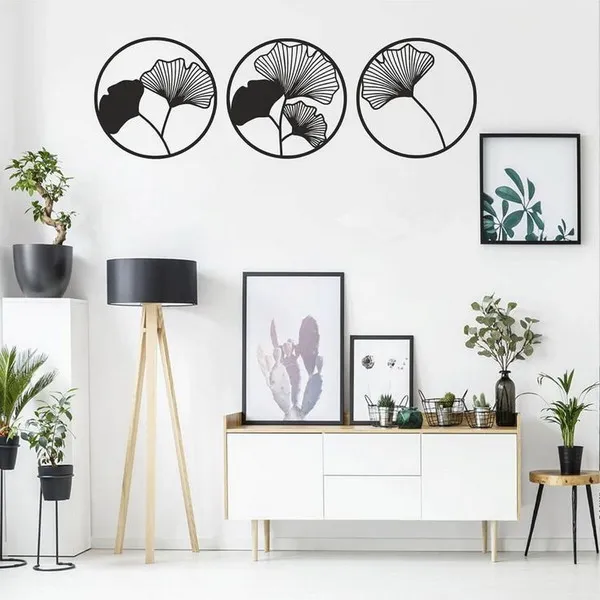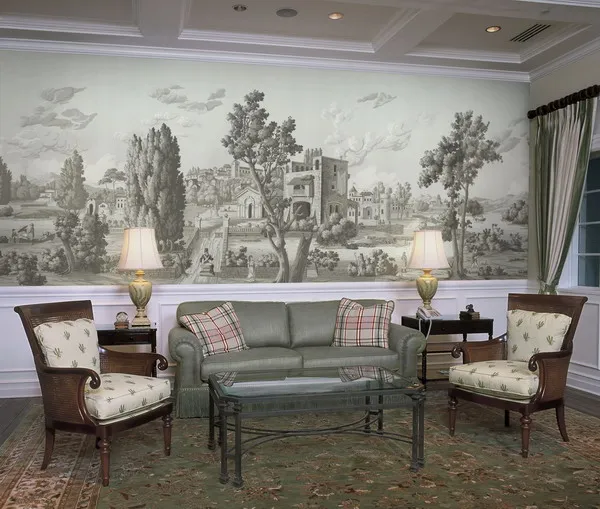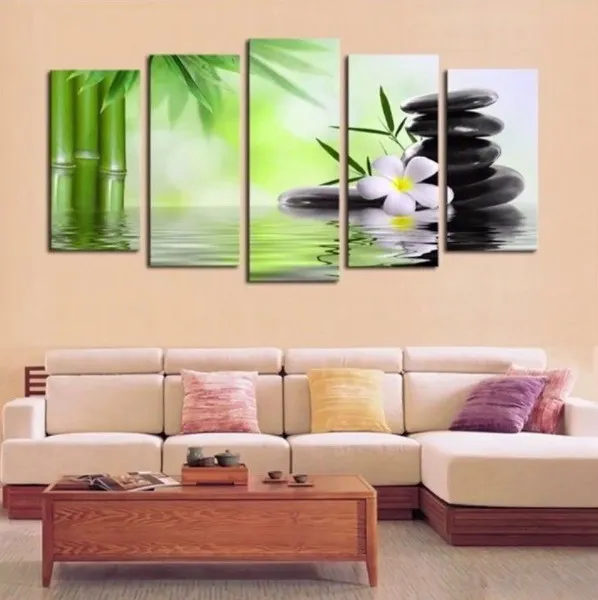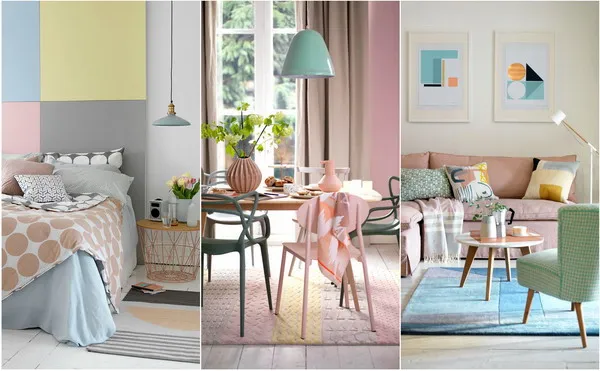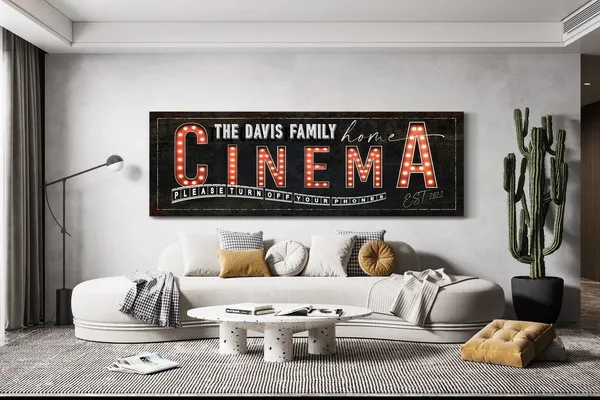Wall art and murals have always been a significant part of interior design, adding personality, depth, and style to any space. As we move into 2026, new trends in wall art and murals are emerging, reflecting shifts in aesthetic preferences, technological advancements, and environmental consciousness. We will explore the top trends in wall art and murals for 2026, offering insights into how these trends can transform your spaces.
Wall art and murals are powerful tools for interior design, capable of transforming spaces by adding color, texture, and a sense of identity. As we step into 2026, the trends in wall art are evolving, embracing new technologies, materials, and themes. This year, expect to see a blend of high-tech innovations, nature-inspired designs, cultural motifs, and sustainable practices dominating the scene.
High-Tech Murals
Augmented Reality (AR) Murals
One of the most exciting trends for 2026 is the integration of augmented reality (AR) into murals. AR technology allows murals to come to life when viewed through a smartphone or tablet. These interactive murals offer an engaging and immersive experience, making art more dynamic and accessible.
Example Applications:
- Retail Spaces: Interactive murals can attract and engage customers, providing an innovative shopping experience.
- Educational Institutions: Schools and museums can use AR murals to create interactive learning environments.
Digital Projection Art
Digital projection is another technology transforming wall art. Artists can project digital images onto walls, creating vibrant and ever-changing murals. This method allows for easy updates and customization, making it perfect for commercial spaces and events.
Nature and Ecology Themes
Flora and Fauna
Nature-inspired themes continue to be popular in 2026, with a focus on flora and fauna. These designs bring the beauty of the outdoors inside, creating a tranquil and refreshing atmosphere.
Popular Motifs:
- Botanical Illustrations: Detailed drawings of plants and flowers.
- Wildlife Scenes: Images of animals in their natural habitats.
Eco-Conscious Art
With growing awareness of environmental issues, eco-conscious art is gaining traction. Artists are using sustainable materials and techniques to create wall art that not only looks good but also promotes environmental stewardship.
Examples:
- Recycled Materials: Art made from reclaimed wood, metal, and fabric.
- Natural Dyes: Using plant-based dyes for a more eco-friendly approach.
Abstract and Geometric Designs
Abstract and geometric designs are perfect for creating a modern and dynamic look. These designs use bold shapes and vibrant colors to make a statement.
Characteristics of Abstract Art
- Non-Representational Forms: Abstract art does not depict recognizable objects, focusing instead on shapes, colors, and textures.
- Bold Colors: Bright, contrasting colors are often used to create visual impact.
Geometric Patterns
Geometric patterns, such as hexagons, triangles, and circles, are popular in 2026. These patterns can be arranged in endless configurations, offering versatility in design.
Textured Wall Art
Materials and Techniques
Textured wall art adds depth and interest to a space. Artists use various materials and techniques to create texture, including:
- Wood: Carved or layered wood adds a rustic, natural feel.
- Fabric: Textiles like tapestry or woven art provide a soft, tactile element.
- Metal: Metal sculptures and installations can create a modern, industrial look.
Benefits of Textured Art
Textured wall art can make a space feel more inviting and dynamic. It engages multiple senses, adding a tactile dimension to visual art.
Cultural and Ethnic Motifs
Celebrating Diversity
Cultural and ethnic motifs are gaining popularity as people seek to celebrate diversity and heritage through art. These designs incorporate patterns, symbols, and colors from various cultures around the world.
Examples:
- African Tribal Art: Bold patterns and earthy colors.
- Asian Calligraphy: Elegant lines and traditional symbols.
Enhancing Cultural Appreciation
By incorporating cultural motifs, wall art can promote understanding and appreciation of different cultures. It can also add a unique and personal touch to a space.
Minimalist Wall Art
Key Elements of Minimalist Design
Minimalist wall art focuses on simplicity and functionality. Key elements include:
- Limited Color Palette: Often monochromatic or using a few muted colors.
- Simple Shapes: Basic geometric forms and clean lines.
Creating a Clean and Sophisticated Look
Minimalist art can create a serene and uncluttered atmosphere. It emphasizes the beauty of simplicity and can complement a variety of interior styles.
Typography and Motivational Quotes
Importance of Typography
Typography is a powerful tool in wall art, capable of conveying messages and emotions through text. In 2026, expect to see more wall art featuring motivational quotes and creative typography.
Popular Quotes:
- Inspirational Phrases: Encouraging words to uplift and motivate.
- Custom Text: Personalized messages tailored to the individual or space.
Impact on Mood and Atmosphere
Typography art can influence the mood of a room, making it feel more positive and inviting. It can also serve as a daily reminder of important values and goals.
3D Wall Art
Techniques for Creating 3D Effects
Three-dimensional wall art adds depth and intrigue to any space. Artists use various techniques to achieve 3D effects, including:
- Layering: Stacking materials to create a sense of depth.
- Shadows: Utilizing light and shadow to enhance the 3D effect.
Visual Impact
3D wall art can be a striking focal point in a room. It creates a sense of movement and dimension, making the art more engaging and lifelike.
Sustainable Wall Art
Eco-Friendly Materials and Practices
Sustainability is a major trend in 2026. Artists are increasingly using eco-friendly materials and practices to create wall art that is kind to the environment.
Examples:
- Recycled Materials: Using reclaimed wood, metal, and paper.
- Low-VOC Paints: Eco-friendly paints with low levels of volatile organic compounds.
Benefits for the Environment and Consumers
Sustainable wall art not only reduces environmental impact but also appeals to consumers who are conscious of their ecological footprint. It’s a way to enjoy beautiful art while supporting sustainable practices.
Community Murals
Involving Local Communities
Community murals involve local residents in the creation process, making the art more meaningful and representative of the community’s values and stories.
Examples:
- Neighborhood Projects: Murals that reflect the history and culture of a local area.
- Collaborative Art: Projects where multiple community members contribute to the mural.
Social and Cultural Significance
Community murals can strengthen social bonds and foster a sense of pride and identity. They often address social issues and celebrate cultural heritage.
Retro and Vintage Styles
Key Elements of Retro and Vintage Art
Retro and vintage styles are making a comeback in 2026. These designs draw inspiration from past decades, incorporating nostalgic elements.
Popular Eras:
- 70s: Bold colors, psychedelic patterns.
- 80s: Neon colors, geometric shapes.
- 90s: Grunge and pop culture references.
Nostalgic Appeal
Retro and vintage wall art can evoke memories and create a warm, nostalgic atmosphere. It’s a way to pay homage to the past while adding character to a space.
Digital Wall Art
Digital Creation and Printing Techniques
Digital wall art is created using digital tools and printed on various materials. This allows for high customization and easy replication.
Advantages:
- Customization: Easy to adjust colors, sizes, and designs.
- Versatility: Can be printed on canvas, metal, or acrylic.
Future Prospects
The future of digital wall art is bright, with advancements in printing technology and digital design tools opening up new possibilities for artists and consumers.
Pastel Colors
Popularity and Psychology of Pastel Colors
Pastel colors are soft, soothing, and popular in 2026. They create a calming atmosphere and are often used in minimalist and modern designs.
Common Pastels:
- Soft Pinks: Gentle and romantic.
- Light Blues: Calm and serene.
- Pale Greens: Refreshing and natural.
Creating a Calm and Soothing Environment
Pastel wall art can make a space feel more peaceful and inviting. It’s ideal for bedrooms, living rooms, and other areas where relaxation is a priority.
Personalized Wall Art
Customization Options
Personalized wall art allows individuals to create pieces that reflect their personality, memories, and experiences. This trend is growing as people seek unique and meaningful decor.
Examples:
- Family Portraits: Custom illustrations or photos.
- Personal Milestones: Celebrating important life events.
Unique and Personal Touch
Personalized wall art adds a unique and personal touch to a space, making it truly one-of-a-kind. It’s a way to make your home feel more intimate and special.
Conclusion
2026 is set to be an exciting year for wall art and murals, with trends that embrace technology, sustainability, and personalization. Whether you’re looking to create a modern, minimalist space or a vibrant, nature-inspired environment, there’s a trend to suit every taste and style. Embrace these trends to transform your spaces and make a lasting impression.
FAQ Section
What are the top trends in wall art for 2026?
The top trends include high-tech murals, nature and ecology themes, abstract and geometric designs, textured wall art, cultural and ethnic motifs, minimalist art, typography and motivational quotes, 3D wall art, sustainable practices, community murals, retro and vintage styles, digital wall art, pastel colors, and personalized art.
How is augmented reality (AR) being used in wall art?
AR technology is used to create interactive murals that come to life when viewed through a smartphone or tablet, offering an engaging and immersive experience.
Why are nature and ecology themes popular in 2026?
These themes reflect a growing awareness of environmental issues and a desire to bring the beauty of the outdoors inside, creating a tranquil and refreshing atmosphere.
What materials are used for textured wall art?
Artists use various materials such as wood, fabric, and metal to create textured wall art, adding depth and interest to a space.
How can personalized wall art add value to a home?
Personalized wall art reflects the personality and experiences of the homeowner, adding a unique and intimate touch to the space, making it truly one-of-a-kind.
Are there eco-friendly options for wall art?
Yes, many artists are using sustainable materials and practices, such as recycled materials and low-VOC paints, to create eco-friendly wall art that supports environmental preservation.

